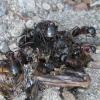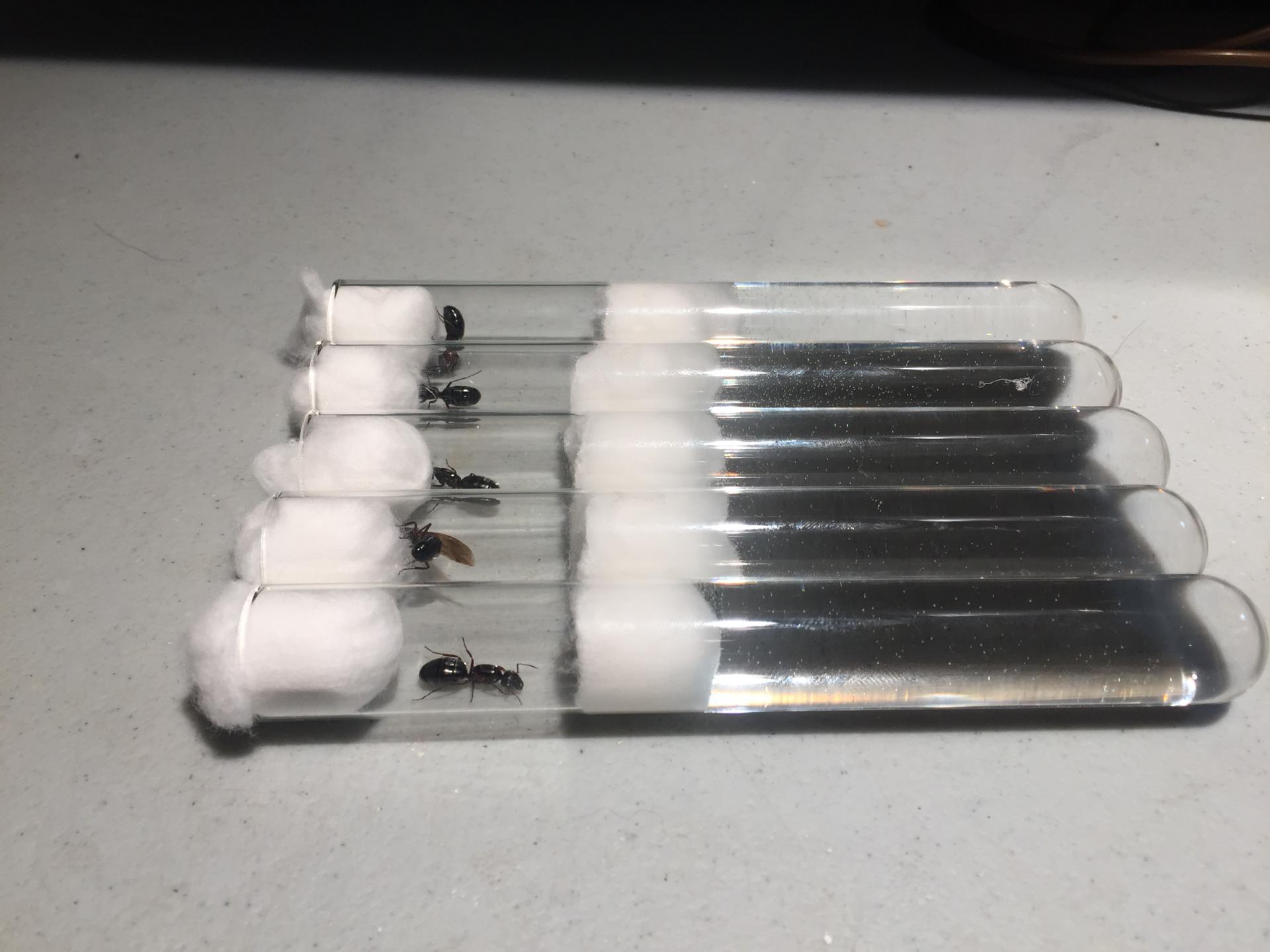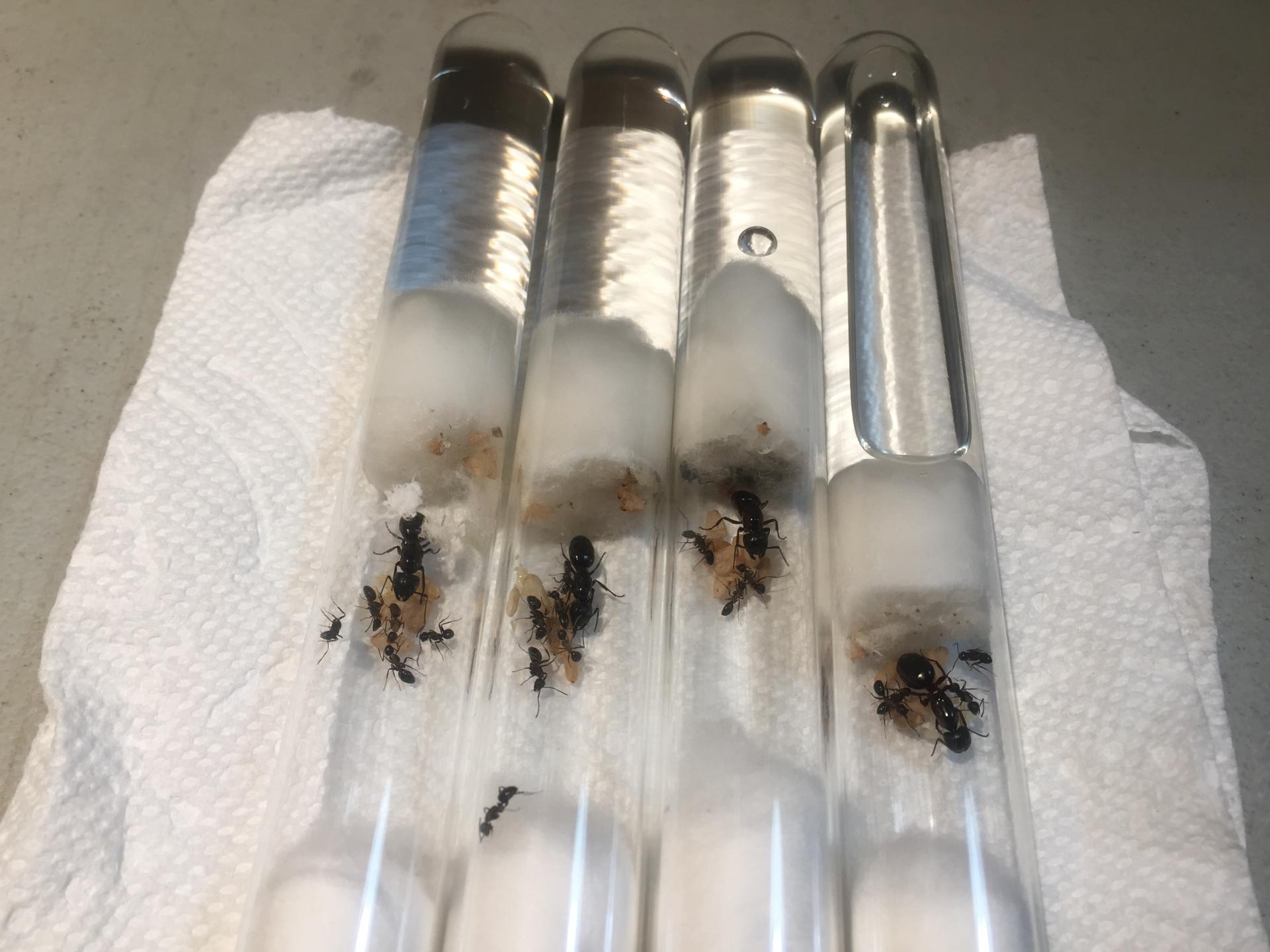2020 (CAMPONOTUS NOVAEBORACENSIS)
In May 2020, I attempted to keep ants for the first time starting with 10 Camponotus novaeboracensis queens. I wondered if keeping them in the light had any negative effect on colony development, so I put 5 in a foam lined case in the dark and 5 in the light on a towel. Based on the results, I doubt that the light has a notable impact on colony health for this species. Here are some pictures and notes I took at the time.
May 8: Five queens are captured at around 4:00-6:30 PM and placed in test tube setups in the dark. One still has wings.
May 9: Three queens are captured at around 4:00-6:30 PM and placed in test tube setups in the light.
May 10: Two queens are captured at around 1:00-4:00 PM under objects and placed in test tube setups in the light.
May 15:
D#1: E
D#2: E
D#3: E
D#4: E
D#5: Still has wings, no eggs laid.
L#1: Caught with parasitic larvae in abdomen, which burst May 13.
L#2: Tugs at cotton, paces, no eggs laid.
L#3: E
L#4: E
L#5: E
May 22:
D#1: E
D#2: E
D#3: E
D#4: E
D#5: Still has wings, no eggs laid.
L#2: 3 eggs just laid, at which point she settled down. She is very skinny, and her eggs are white, unlike the yellowish eggs laid by the other queens.
L#3: E
L#4: E
L#5: E
May 29:
D#1: E
D#2: E
D#3: E
D#4: E
D#5: Still has wings, but a few eggs were laid.
L#2: E (a few more were laid this past week)
L#3: E
L#4: E
L#5: E
June 5:
D#1: E + L, mainly L.
D#2: E + L, mainly L.
D#3: E + L, mainly L.
D#4: E + L, mainly L.
D#5: Still has wings, a few more eggs were laid.
L#2: E (more since last week)
L#3: E + L, mainly L.
L#4: E + L.
L#5: E + L, mainly L.
June 12:
D#1: L + P, mainly L.
D#2: L + P, mainly L.
D#3: L + P, mainly L.
D#4: L + P, mainly L.
D#5: Still has wings, roughly the same number of eggs.
L#2: E
L#3: L + P, mainly L.
L#4: L
L#5: L + P, mainly L.
June 19:
D#1: E + L + 7P
D#2: E + L + 11P
D#3: E + L + 8P
D#4: E + L + 8P
D#5: E + L
L#2: E + L
L#3: E + L + 9P
L#4: E + L + 5P
L#5: E + L + 8P
June 26:
D#1: E + L + 10P
D#2: E + 13P
D#3: E + L + 11P
D#4: E + L + 11P
D#5: E + L + 1P
L#2: E + L + 4P
L#3: E + 9P
L#4: E + L + 10P
L#5: E + L + 12P
July 3:
D#1: E + L + 4P + 5W. Released.
D#2: E + L + 6P + 7W. Released.
D#3: E + L + 9P + 3W. Released.
D#4: E + L + 7P + 4W. Released.
D#5: E + 5P
L#2: E + L + 6P
L#3: E + L + 4P + 5W
L#4: E + L + 9P + 1W
L#5: E + L + 9P + 4W
Edited by BCAntKeeper, May 31 2022 - 8:50 PM.

















